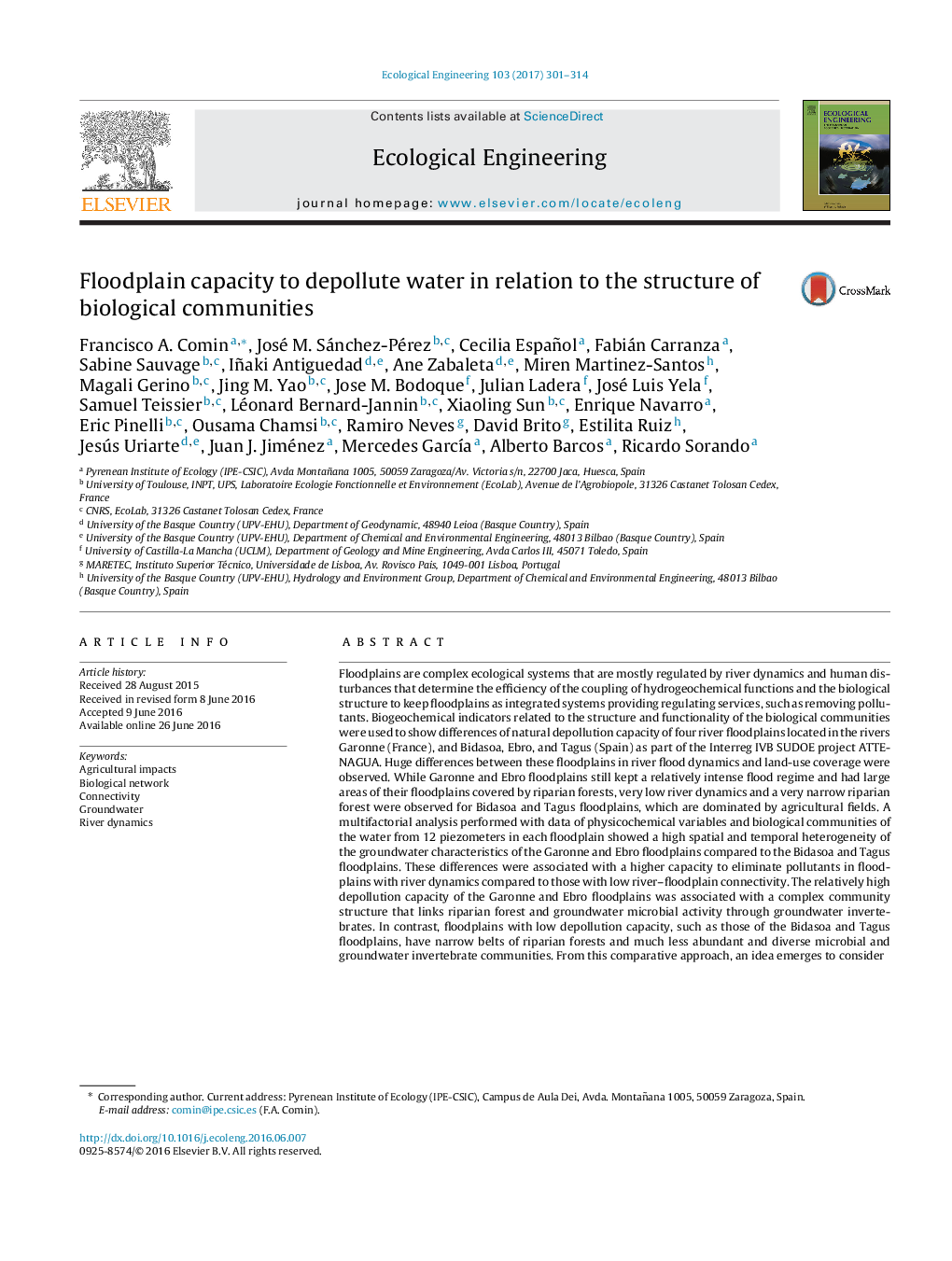| کد مقاله | کد نشریه | سال انتشار | مقاله انگلیسی | نسخه تمام متن |
|---|---|---|---|---|
| 5743887 | 1412323 | 2017 | 14 صفحه PDF | دانلود رایگان |
- A model of biodiversity changes in floodplain groundwater is proposed.
- River flows and floodplain land uses regulate biogeochemical processes.
- Pollution removal in floodplains can be improved managing their regulating factors.
Floodplains are complex ecological systems that are mostly regulated by river dynamics and human disturbances that determine the efficiency of the coupling of hydrogeochemical functions and the biological structure to keep floodplains as integrated systems providing regulating services, such as removing pollutants. Biogeochemical indicators related to the structure and functionality of the biological communities were used to show differences of natural depollution capacity of four river floodplains located in the rivers Garonne (France), and Bidasoa, Ebro, and Tagus (Spain) as part of the Interreg IVB SUDOE project ATTENAGUA. Huge differences between these floodplains in river flood dynamics and land-use coverage were observed. While Garonne and Ebro floodplains still kept a relatively intense flood regime and had large areas of their floodplains covered by riparian forests, very low river dynamics and a very narrow riparian forest were observed for Bidasoa and Tagus floodplains, which are dominated by agricultural fields. A multifactorial analysis performed with data of physicochemical variables and biological communities of the water from 12 piezometers in each floodplain showed a high spatial and temporal heterogeneity of the groundwater characteristics of the Garonne and Ebro floodplains compared to the Bidasoa and Tagus floodplains. These differences were associated with a higher capacity to eliminate pollutants in floodplains with river dynamics compared to those with low river-floodplain connectivity. The relatively high depollution capacity of the Garonne and Ebro floodplains was associated with a complex community structure that links riparian forest and groundwater microbial activity through groundwater invertebrates. In contrast, floodplains with low depollution capacity, such as those of the Bidasoa and Tagus floodplains, have narrow belts of riparian forests and much less abundant and diverse microbial and groundwater invertebrate communities. From this comparative approach, an idea emerges to consider floodplains as dynamic systems with hydrological and biogeochemical characteristics that fluctuate in space and time in accordance with the balance between river dynamics and impacts from human polluting activities in the floodplain.
Journal: Ecological Engineering - Volume 103, Part B, June 2017, Pages 301-314
